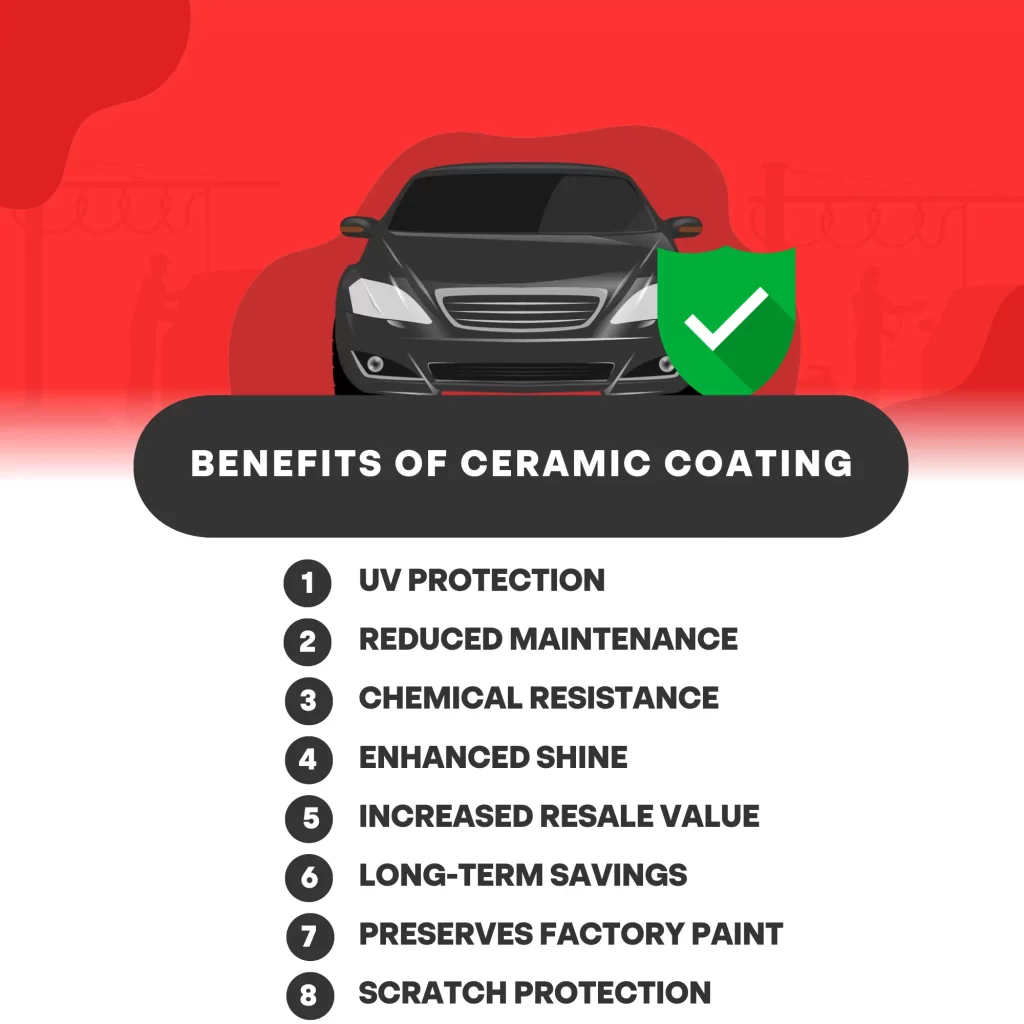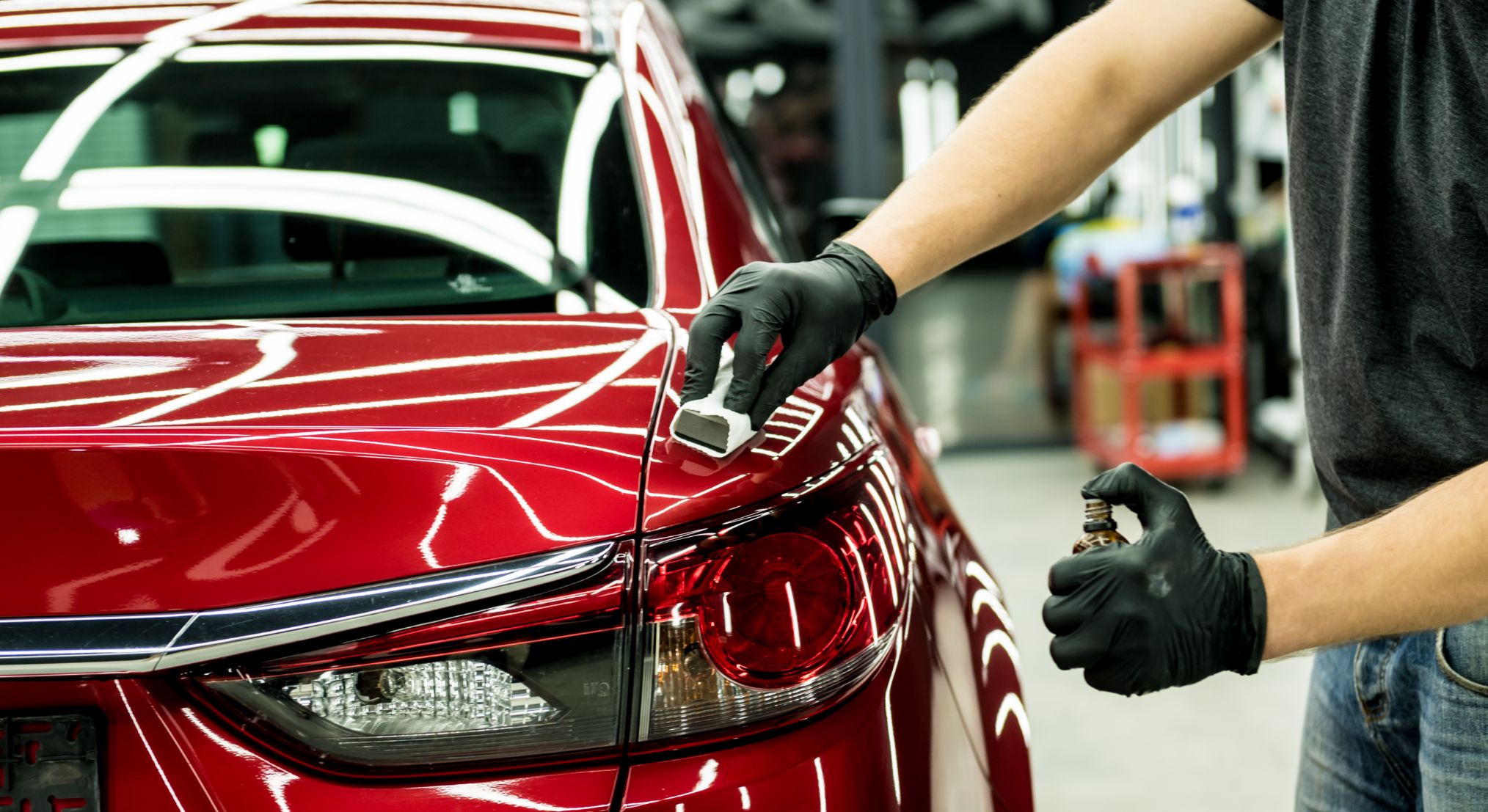Is Ceramic Coating Worth the Investment for Your Car’s Exterior?
Is Ceramic Coating Worth the Investment for Your Car’s Exterior?
Blog Article
Ceramic Layer vs. Typical Wax: Which Provides Better Long-Term Security?
The debate in between ceramic coverings and traditional wax for lorry defense has gathered considerable attention amongst auto enthusiasts and professionals alike. While both serve the function of protecting paint, their distinctions in resilience, application, and lasting upkeep expenses might affect a customer's selection. Ceramic finishes flaunt superior durability and resistance to environmental factors, yet the complexity of their application questions concerning accessibility and practicality. As we explore these contrasting choices, it becomes necessary to consider not only the instant benefits yet additionally the ramifications for car treatment in time.
Overview of Ceramic Layer
Ceramic finish has actually acquired considerable popularity amongst automotive fanatics and detailers alike because of its advanced safety qualities. This ingenious innovation is created to develop a sturdy, hydrophobic shield over a car's paint surface, substantially enhancing its resistance to ecological impurities such as dust, UV rays, and chemical discolorations. Unlike standard wax, which gives a momentary layer of security, ceramic coatings bond at a molecular level with the paint, offering durable durability-- commonly extending past two years with correct maintenance.
The application process entails meticulous preparation of the automobile's surface area, including cleansing and polishing to guarantee ideal adhesion. Once applied, the finishing treatments to form a durable layer that not just includes deepness and gloss to the paint but additionally streamlines maintenance. With its hydrophobic homes, ceramic coating permits water and dust to glide off even more conveniently, decreasing the frequency of laundries and reducing the risk of swirl marks.
Furthermore, ceramic finishings are readily available in various formulations, permitting customers to choose items customized to their specific requirements and preferences. Generally, ceramic layer represents a considerable improvement in paint security innovation, supplying premium efficiency compared to conventional alternatives.
Summary of Traditional Wax
Traditionally considered a staple in automobile care, wax acts as a prominent selection for those looking for an uncomplicated technique to improve and secure their vehicle's paint - ceramic coating. Automotive wax typically comprises all-natural ingredients, such as carnauba, or artificial substances, made to produce a protective layer externally of the paint. This layer not only boosts the automobile's gloss and shine but also offers a barrier versus environmental pollutants
The application of wax is typically easy to use, making it easily accessible for both specialists and do it yourself enthusiasts. It can be used by hand or device, permitting for convenience in the describing process. As soon as applied, wax requires a treating duration, after which it solidifies to form a safety covering. Wax is also recognized for its ability to drive away water, promoting a beading result that helps in the prevention of water places and deterioration.
However, while wax works for improving the aesthetic charm of an automobile, it is essential to note that the defense it offers may necessitate much more regular reapplication contrasted to alternative items, such as ceramic coverings. On the whole, traditional wax remains a preferred alternative for those focusing on ease of use and instant visual enhancement.
Toughness and Long Life Comparison
While both ceramic coatings and traditional wax offer protective advantages for auto paint, their longevity and longevity vary significantly. Typical wax, commonly made from natural carnauba or artificial polymers, usually provides a safety layer that lasts roughly three to six months. This relatively brief life-span necessitates routine reapplication to maintain ideal security.
On the other hand, ceramic coatings are engineered like this from sophisticated nanotechnology, developing a covalent bond with the paint surface. This leads to a robust, hydrophobic layer that can endure for 2 to 5 years, depending upon the product and environmental conditions. The premium resilience of ceramic layers is credited to their chemical framework, which uses boosted resistance to scratches, UV rays, and oxidation.

Security Against Ecological Elements
Shielding an automobile's paint from ecological factors is crucial for preserving its look and worth gradually. Vehicles are constantly subjected to a selection of aspects, consisting of UV rays, bird droppings, tree sap, acid rain, and roadway crud, all of which can endanger the integrity of the paintwork.
Ceramic finishings give a durable defense against these environmental aggressors. Unlike conventional wax, which can degrade swiftly under UV direct exposure, ceramic coatings form a durable, hydrophobic layer that stands up to the harmful results of sunlight and environmental contaminants. This sophisticated technology produces a chemical bond with the automobile's surface area, supplying premium security that lasts for many years, also in rough conditions.
Conventional wax, while less complicated to use, usually calls for constant reapplication and offers minimal resistance to impurities and UV rays. Over time, it can break down, leaving the paint at risk to scratches and oxidation. On the other hand, ceramic coatings preserve their safety top qualities much longer, dramatically reducing the risk of paint damage and guaranteeing that the car keeps its aesthetic charm. As a result, ceramic finishes are significantly acknowledged as the premium selection for lasting defense against environmental factors.
Application and Upkeep Distinctions
The techniques of application and succeeding maintenance for ceramic finishings and conventional wax vary considerably, influencing the overall individual experience and effectiveness of each item. Ceramic coatings need an even more complex application process, typically including surface area prep work that includes cleaning, sanitizing, and polishing the automobile. Once the surface prepares, the ceramic finishing is used in a regulated atmosphere, usually needing professional proficiency to guarantee correct healing and bonding to the paint.

While both products enhance car appearance, the longer-lasting defense supplied by ceramic coatings may justify their first investment, despite the more requiring application procedure. Alternatively, traditional wax remains a popular choice for those looking for an easier, albeit temporary, remedy.

Verdict
In verdict, ceramic layers show substantial benefits over typical wax in regards to resilience and environmental protection. With a lifespan prolonging two to five years and exceptional resistance to UV rays, dirt, and chemical stains, ceramic finishes provide a much more efficient remedy for long-lasting lorry upkeep. The application process may call for specialist know-how, the resulting cost savings and decreased regularity of reapplication emphasize the value of ceramic coatings for those seeking optimal lorry security.
The argument in between ceramic layers and traditional wax for lorry security has amassed considerable interest among auto lovers and experts alike. Unlike traditional wax, which gives a short-lived layer of protection, ceramic coatings bond at a molecular level with the paint, supplying resilient durability-- typically expanding beyond 2 years with proper upkeep.
While both ceramic coverings and typical wax offer protective advantages for vehicle paint, their longevity and durability vary considerably. For auto enthusiasts seeking lasting protection, ceramic finishings provide a compelling advantage over conventional wax items.
In final thought, ceramic coatings demonstrate substantial benefits over traditional wax in terms of resilience and ecological protection.
Report this page